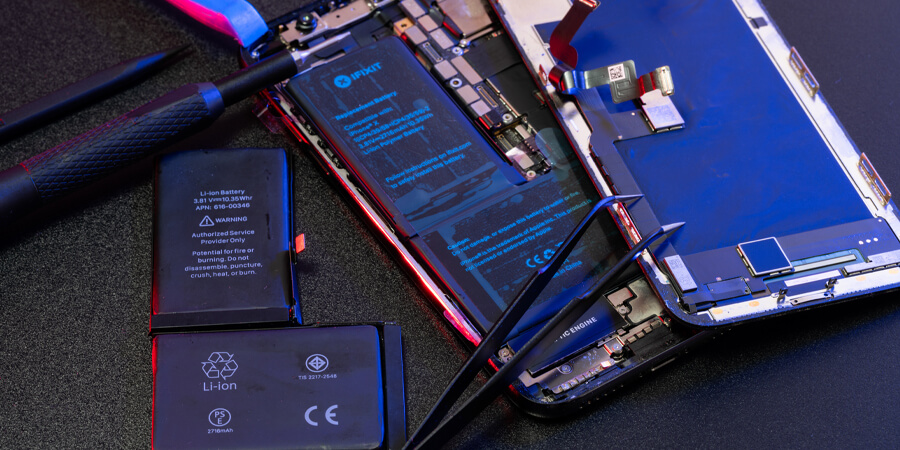In a recent development, the European Parliament voted on a tech regulation that features various measures, including requiring smartphone manufacturers to make their devices' batteries easily replaceable by users.
The core message is clear: the EU is progressing with its regulations that mandate smartphones feature easily replaceable batteries and better foster environmental preservation and benefits to end users. However, given the complexity of the European Union's legislative processes, there's more to the story than meets the eye. Improved details can potentially reshape the landscape of compliance for smartphone manufacturers.
Competing Legislative Frameworks
Notably, there are some legal hurdles, and the deadline of 2027 for producing smartphones with readily replaceable batteries is not the only one. An additional piece of legislation, "Ecodesign for Smartphones and Tablets," is currently making its way through the EU's legislative channels. This legislation shares similar objectives of facilitating battery replacement for smartphones but is expected to take effect sooner. To this end, by the time 2027 arrives, some smartphone manufacturers might have already introduced devices with user-replaceable batteries.
As per an initial draft of the ecodesign regulation available on the EU's official website, the battery replaceability should be doable "without tools, or with basic tools, product group-specific tools, other commercially available tools and proprietary tools, thermal energy, or solvents to disassemble it." Furthermore, it underscores the necessity for spare parts to be accessible for up to seven years following a phone's release and emphasizes that the replacement process should be feasible for a layperson. The ecodesign regulation is currently undergoing examination by the European Parliament and Council, with expectations of its passage into law in September this year, followed by the implementation of its smartphone battery replacement requirements a year and a half later.
The battery regulation that the European Parliament endorsed during this period has its own significance in addition to the synergy between the two legislative approaches. This is due to the fact that the battery regulation takes a more stringent stance compared to the ecodesign regulation in a crucial aspect: it doesn't provide an exemption that would allow smartphone manufacturers to sidestep the requirement for easily replaceable batteries if they manage to produce batteries with prolonged lifespans. Specifically, batteries must maintain at least 83% of their capacity after 500 charging cycles and 80% after 1,000 cycles to meet the criteria. Moreover, these devices must be engineered to be dust-tight and protected against immersion in water up to one-meter deep for a minimum of 30 minutes, in accordance with the ecodesign rules, capabilities often achieved through adhesive techniques.
Defining ‘Removable’ Batteries
The question is: what exactly qualifies as an "easy-to-replace" smartphone battery?
A significant part of the EU's definition hinges on the tools necessary for the replacement process. Although the term "removable" might evoke imagery from the era of feature phones or devices, which require minimal tools such as a fingernail for opening, the current battery regulation's interpretation is somewhat different. Instead of demanding complete tool-free removal, the regulation sets boundaries on the types of tools that would be required for battery replacement.
For some experts, the regulation emphasizes avoiding the necessity for proprietary tools or intricate methods rather than mandating tool-free replacement.
An additional point of contention revolves around the coexistence of user-replaceable batteries and waterproofing features. The battery regulation includes an exemption for devices "that are specifically designed to be used, for the majority of the active service of the appliance, in an environment that is regularly subject to splashing water, water streams, or water immersion.” Critics of such rules often highlight waterproofing as a feature that could be compromised if a device is designed for easy opening.
A Promising Start
Despite the progress achieved through this vote, the EU's regulations for user-replaceable batteries are still a work in progress. Formal endorsement from the Council of the EU is required for the battery regulation, while the ecodesign rules are subject to ongoing scrutiny by the European Parliament. Although the eventual enactment of both sets of rules seems likely given their current trajectory, discussions continue among various stakeholders, each advocating for their interpretation of the regulations' stringency.
In conclusion, it appears that smartphone users in Europe will have a smoother experience maintaining their devices and reducing electronic waste as battery capacities decline over time. And unless manufacturers choose to create devices with user-replaceable batteries exclusively for the European market, the global community is poised to benefit from these developments.







